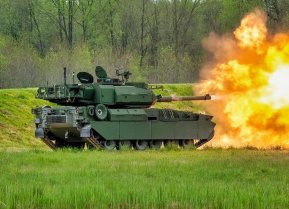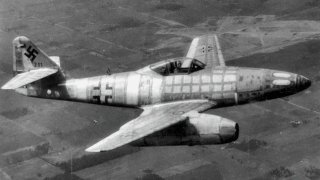Fighters vs. Bombers: The Air War Over Europe in World War II
During World War II, the strategic bomber offensive tested the balance between bombers and fighters, evolving from the early limitations demonstrated in the Battle of Britain to the destructive campaigns against Germany
Summary: During World War II, the strategic bomber offensive tested the balance between bombers and fighters, evolving from the early limitations demonstrated in the Battle of Britain to the destructive campaigns against Germany. Initially, the Luftwaffe's use of bombers with fighter escorts highlighted the inadequacies of bombers operating without heavy payloads and defensive armaments against the RAF's effectively coordinated fighter defense. The war's progression saw the RAF and USAAF deploying heavy bombers like the Avro Lancaster and the Boeing B-17, challenging German defenses and introducing a new era of air combat marked by significant technological advancements. Despite heavy losses, such as those in the Schweinfurt raids, the introduction of long-range fighter escorts gradually shifted the balance in favor of the Allies. This offensive ultimately played a crucial role in undermining the German war effort, despite the high cost, and hinted at the future dynamics of aerial warfare, which would be dominated by jet propulsion, missiles, and nuclear capabilities.
The Evolution of Aerial Warfare: Lessons from WWII's Bomber Offensive
When war broke out in September 1939, none of the combatants were prepared to fight in the way that they wanted.
The British lacked the heavy bombers that interwar doctrine suggested that would be necessary to bring the fight to Germany. The Germans lacked the navy they needed to cut Britain off its Atlantic supply lines.
The war put extraordinary demands on every air force. Within a year of the opening of World War II, the Luftwaffe and the Royal Air Force put every theory of the balance between bombers and fighters to the test. Over the course of the war, which eventually saw the entry of the United States, many thousands of aircraft would be destroyed, along with dozens of cities.
From Battle of Britain…
The Luftwaffe initially sought to use bombers and fighters together, in support of ground operations against Poland, France, and the Low Countries. The raids against Rotterdam and Warsaw did not face serious fighter opposition, and the Battle of France was largely won by German tanks and infantry, rather than by its bombers. But when Britain refused to come to terms, the Germans sought to use the Luftwaffe to destroy the Royal Air Force, damage British industry, and clear the English Channel for an amphibious invasion. German strategy was to use bomber raid to attrite the RAF fighter force to a residue, then inflict enough damage on the British aviation industry to maintain its advantage.
The Royal Air Force’s Fighter Command established a complex system of information collection and distribution that enabled it to intercept incoming German formations under the most advantageous circumstances. This saved the British a considerable amount of fuel and time, and made the interceptions more lethal than the Germans could sustain. German bombers usually operated with fighter support, rather in independent, self-defending formations. The Germans experimented with a variety of different support schemes, although they suffered from the need to operate at distance from their bases.
Hurricane and Spitfire fighters, with the intelligence and radar apparatus that supported them, inflicted more damage on the Germans than the Luftwaffe could tolerate. Moreover, German bombers simply lacked the payload to inflict sufficient damage upon the British. British industry produced more fighters than German industry could produce bombers, ensuring that the RAF would always have the advantage, especially over its own territory. Although it was close run, fighters won the first duel of the war.
… to Combined Bomber Offensive
But bomber advocates could legitimately object that the Luftwaffe lacked a true heavy bomber that could protect itself, while at the same time inflicting serious damage on the enemy. Eventually, the Royal Air Force and the U.S. Air Force built precisely those kinds of bombers, represented in the former by the Avro Lancaster and the Handley Page Halifax, and in the latter by the Boeing B-17 Flying Fortress and the Consolidated B-24 Liberator. All of these bombers could make around 280 miles per hour, with the British bombers carrying heavier loads (in excess of 12,000) and the American bombers sacrificing bomb load for defensive armament (4000–8000 of bombs, depending on distance to target).
The RAF began serious bombing efforts in 1942. Arrayed against the Allied bomber formations were layers of German defenses. These included early warning radars, sky watchers, and squadrons of interceptors including the Bf-109 and the Focke Wulf Fw-190. The latter could fly at 425 miles per hour and clime at a rate of 3300 feet per minute. The RAF minimized the lethality of this system by flying mainly at night, when visual identification and interception was difficult.
The Americans, on the other hand, were committed to testing their theories of daylight precision bombing, which brought USAAF bombers into direct combat against German fighters. This would make it easier to attrite the Luftwaffe out of existence, while also ensuring the accuracy of the bombing raids. But American bombers struggled to hit their targets accurately, in no small part because of harrying attacks by Luftwaffe fighters. The Schweinfurt Raids were an excellent example of the difficulties that bombers faced in attacking German air defenses in 1943. The raids, intended to destroy German ball-bearing production capacity and therefore disrupt Germany’s war economy, resulted in immense losses in U.S. bombers; sixty in the first raid and seventy-seven in the second raid. The Germans lost less than seventy fighters in total.
Luftwaffe interceptors didn’t kill every bomber, but then they didn’t need to; all they needed to do was exact an attrition rate that made continuing the CBO economically impossible. The Allied problem was exacerbated by the fact that German pilots shot down over Germany returned to service in short order, while Allied bomber crews ended up in POW camps. German tactics involved breaking up bomber formations with bombs or rockets, then going after individual bombers, which were fairly easy to kill. Some German pilots even rammed Allied aircraft, a tactic that many pilots remarkably managed to survive.
As the bombing campaign climaxed in 1944 and 1945, the USAAF introduced long-range escorts for its bombers. This had the effect of turning bombers into a counterforce tool, as German fighters engaged the escorted bomber formations at a serious disadvantage. For their part, the Germans introduced the premier interceptor of the war, the Me-262 “Swallow” jet fighter, which could exceed 550 mph and climb at 1,200 meters per minute. Using rockets to disrupt bomber formations and cannons to kill the bombers, the Swallow might have made the bomber offensive impossible if it had been introduced earlier in the war. In the event, though, the Allies managed to inflict horrific damage on Germany, albeit at enormous cost.
Final Bombs:
The strategic bomber offensive over Europe pitted some of the world’s most advanced bombers against some of its most advanced fighters. The fighters exacted an awful toll on the bombers, but the offensives undoubtedly had an impact on German industrial production. Some thousands of bombers and fighters were lost on the Allied side, with a very significant number of fighters killed on the German side. Allied and German military casualties were both dreadful, as were German civilian casualties.
The Allies had enough of an economic advantage that they could afford to pour remarkable amounts of men and material into the offensive, and consequently have an impact on ending the war. Whether those resources could have been better spent is a different question. Even as the war ended, however, it became clear that the next confrontation between bombers and fighters would change, both because of the advent of jet technology (which would transform both kinds of planes) and because of the introduction of missiles and nuclear weapons.
About the Author: Dr. Robert Farley
Robert Farley, a frequent contributor to TNI, and teaches at the University of Kentucky.


